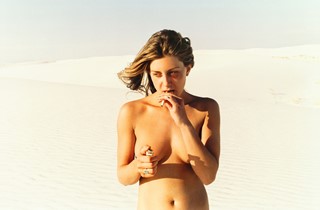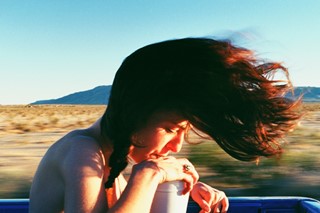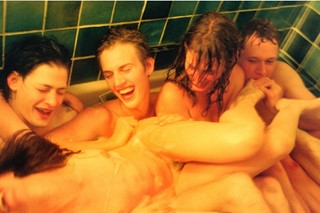If asked to come up with two artists synonymous with the depiction of youth, hedonism and unconventional beauty, it would be difficult to produce two more fitting candidates than photographer Ryan McGinley and director Gus Van Sant...
If asked to come up with two artists synonymous with the depiction of youth, hedonism and unconventional beauty, it would be difficult to produce two more fitting candidates than photographer Ryan McGinley and director Gus Van Sant. In McGinley's photos, kids leap, shrieking with joy, through tree canopies and star strewn skies; they pile en masse into bathtubs; they gaze out of blackened eyes in portraits redolent with youth's brittle power and vulnerability. In films such as My Own Private Idaho and Drugstore Cowboy, Gus Van Sant explores young characters who exist outside of Hollywood's glittering spotlight, who are on an odyssey of sexual experimentation, deviating from society's established norms.
Here, in a conversation recorded for McGinley's first monograph chronicling his entire career, Whistle For The Wind, photographer and filmmaker discuss the appeal of youthful subjects, the inevitability of falling in love with characters created for the camera, and the true sexiness of nudity.
RM: What do you think it is about youth that you keep coming back to? My friend always jokes that I have arrested development. Do you feel like that?
GVS: I think that’s part of it. But I think that arrested development is really part of being youthful in your way of thinking. I always remember the Marx Brothers saying that they felt like they were fourteen. I think they had to feel that way, or else they’d never have been able to be the Marx Brothers. As an artist, you’re trying to have a playful mind. I think for me, the youthful characters are just the most interesting part of life.
RM: A lot of people ask me if I’m going to continue photographing young people as I get older. It’s a hard question for me to answer because, well, I don’t know. Maybe. I feel like youth is what I’m more interested in because it’s a time in your life when there is so many possibilities and so much confusion and anger and optimism, and it’s all wrapped up together. But I never know how to answer that question.
GVS: Yes, it’s complicated. For example, there’s a couple that took photographs of water towers...
RM: Bernd and Hilla Becher.
GVS: Right, and if you had asked them, “Are you going to continue to shoot water towers for the rest of your life,” they might have said, “Oh yes, of course,” because that’s their deal. So if you are shooting people aged fourteen to twenty-five – that’s sort of my age group – then maybe that’s your deal. It’s a more common orientation that water towers, I think. Otherwise, you would see a lot of water tower art. Some people paint barns. I think that’s a New England representation of tranquillity, but you can see tranquillity in your photos of young people. I don’t know how to answer it either.
RM: Whomever I’m photographing, I sort of fall in love with, or rather my camera falls in love with them. It could be a boy or a girl, because it’s all fantasy. It’s fiction. But people still look at photographs like they’re one hundred percent real. There’s this idea that the image I’m showing them is documentary, and so they project their own ideas about what’s going on. People will come up to me and say the weirdest things about my photographs.
GVS: Oh really?
RM: Yeah, they’ll describe something, and I’ll be like, “Are you sure you are talking about my photo?” And they’ll say, “Yeah, you know, the one where the person is running from the burning car”. Where they got that idea, I have no clue. But just getting back to what I was saying, I feel like there is a sense that you really have to love someone to photograph them. Not in an intimate sense, but I have to fall in love with someone with my camera to make really good pictures of them.
GVS: A lot of times with my lead characters, my attention becomes absorbed by them. I’ve noticed that specially with Matt Dillion, Sean Penn, River and Keanu, and Mike Pitt. But when they are out of costume, they’re totally different people.
RM: I always feel my models look sexier with clothes on. I’m spending so much time investigating their bodies and having them do all these strenuous activities while nude, so when they put their clothes on, I’m like, “Oh wow, you look great.”
GVS: Well, clothes do make people sexier.
RM: Yeah, it’s funny, and it’s shocking to see that. Okay, so you have worked with a lot of people and you’ve probably met all your heroes. Do you think that you should meet your heroes, or do you think it’s disappointing?
GVS: It depends on whether your heroes want to meet you.
Whistle For The Wind is out now, published by Rizzoli.



